
Demolition of a shipyard Alternativa 2012 in Gdansk
The second year of Alternativa in Gdansk takes place in the same spaces as its first edition, but the surrounding of the buildings and the outdoor atmosphere has changed, and is changing drastically every day.

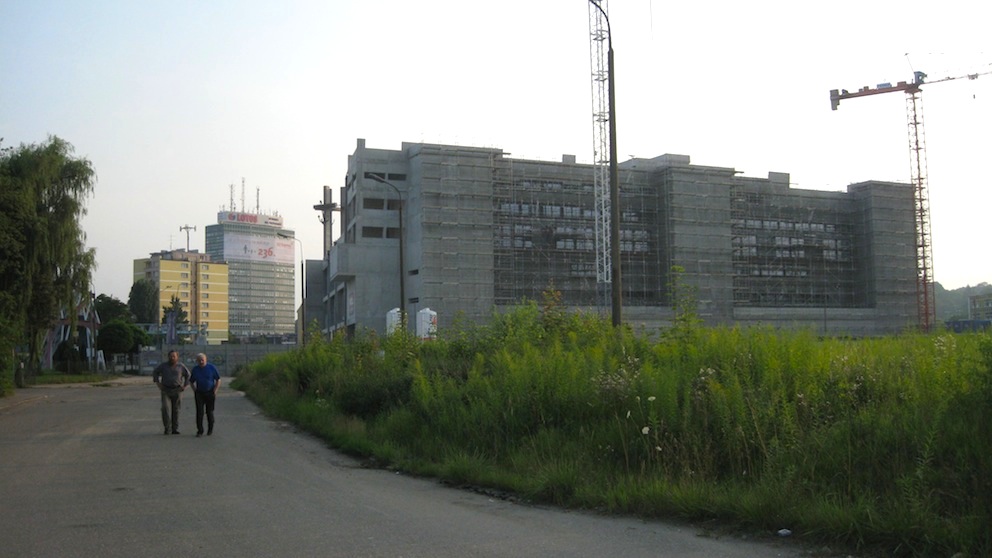
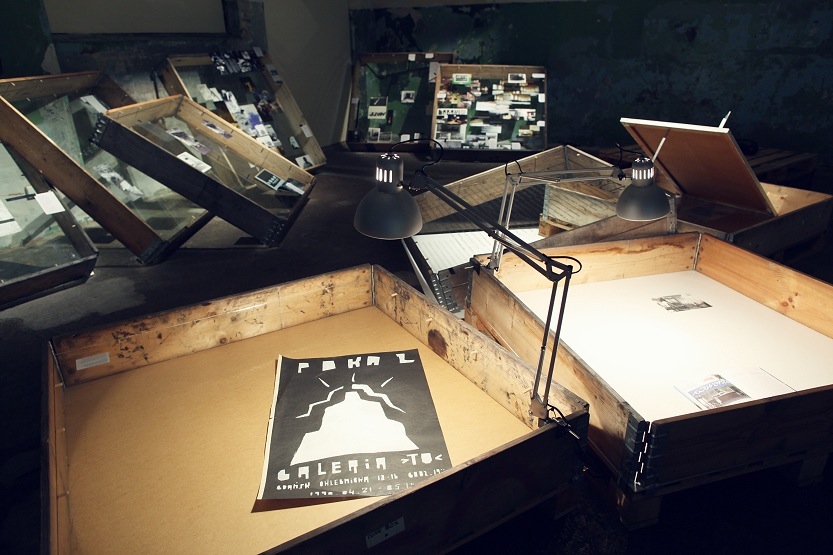
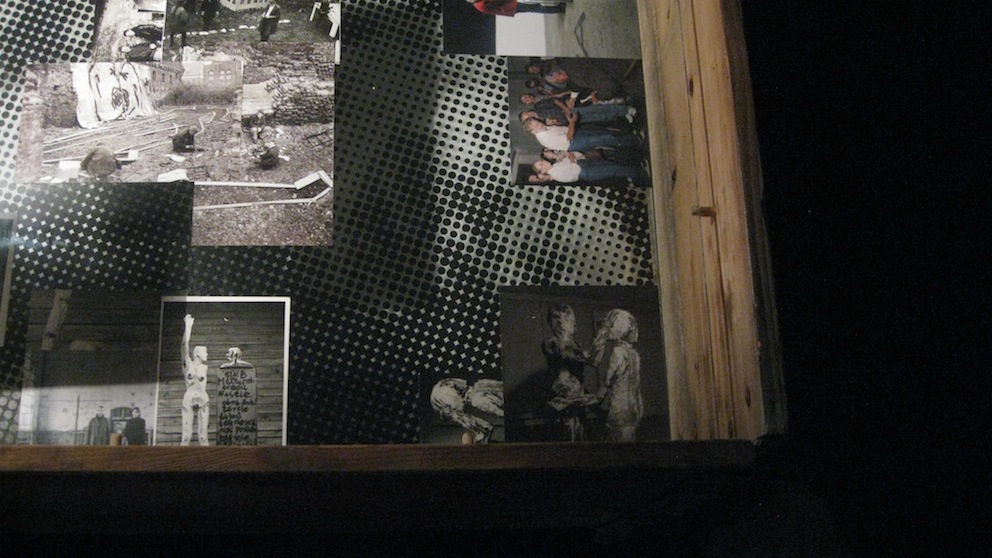

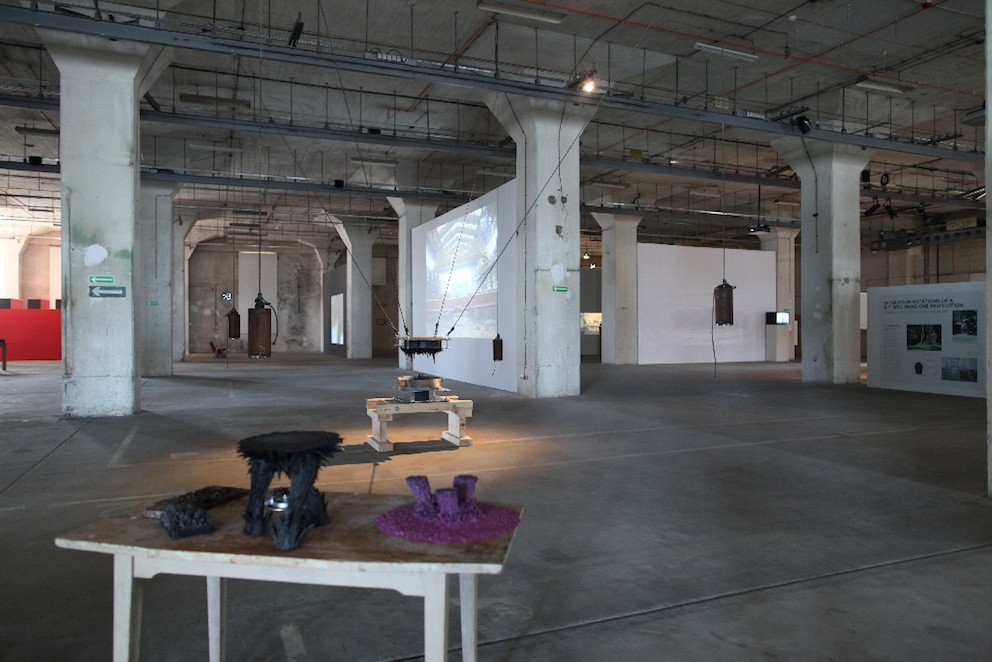
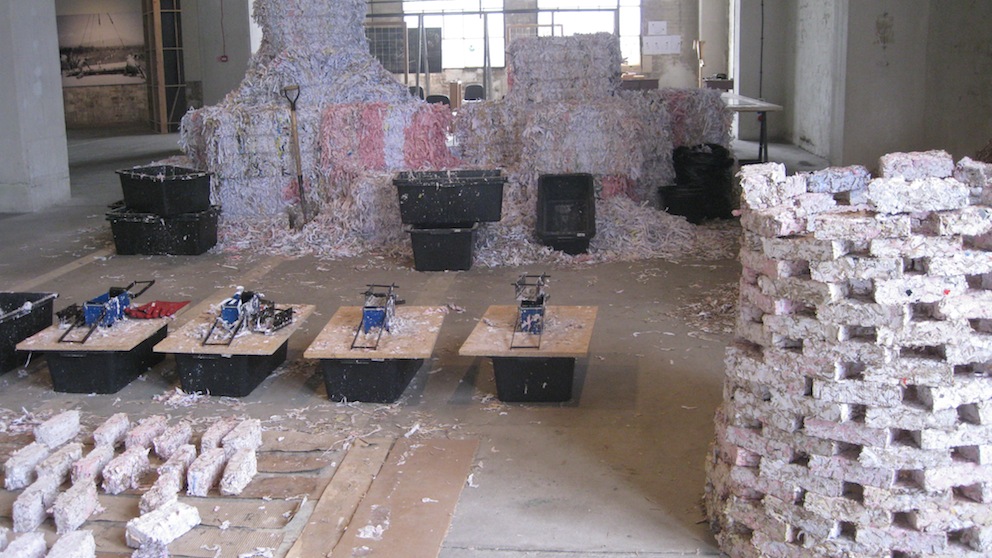
On my arrival at Gate #2 of Stocznia Ganska (the shipyard) it wasn’t the green, run down car park looking like a wasteland that welcomed me. It was a giant concrete grey tilted building without any windows that is placed adjacent to the Solidarity Square in front of the shipyard. It is the European Centre for Solidarity, but it looks so scary that the fear rises that no one dares to go in once it is finished. This development doesn’t seem to have anything to do with solidarity. Most of all it shines a light on the big investors; this building is the forerunner of the giant buildings that will take over the humble shipyard in the near future. Wyspa Institute for Art (wyspa means ‘island’) is the institution that, by showing contemporary art, fights a brave battle against the big speculators and investors from outside Gdansk and Poland.
Aneta Szylak, director of Wyspa, set up Alternativa in 2009 as an ambitious project that sheds a light on contemporary art that deals with political issues within the context of a location. Szylak: ‘The concept of the current edition draws upon the political traditions of Gdansk as well as the new artistic phenomena that started to emerge in the city in the early 1980s. These were typically related to political, historical and urban contexts. These artistic movements tended to be self-organized, independent and willing to discover unfamiliar spaces within the city.’
Alternativa 2012 exists of two large exhibitions and several accompanying events. The exhibition in the building of Wyspa is Island – Now is Now, which deals with ideas from the archive. It stages the remnants and best practices from the exhibition with the same title that took place in the 1980s. In a nostalgic setting on the ground floor, with many images and video’s of crazy, expressive installations and performances, the group of radical and self-organized young artists is portrayed as the founding fathers of the contemporary art scene in Gdansk. Upstairs, the ghosts of the sculptures presented during that one special show are frozen in black wooden shadows that can be traced back in the diverse publications that are presented in a corner. When you listen to the accompanying interviews – unfortunately only in Polish – you get a feel for the unruliness of that moment, which unfortunately cannot be found in this contemporary space.
I’m off to the special Alternativa building, Hall 90B, an industrial building renovated to host Alternativa. It is hard to compete with this amazing floor through traditional presentation of works. The exhibition in this 4000 square meter space deals with material in all thinkable ways and bears the simple but effective title Materiality. It is curated by four curators: Leire Vergara, enlightened curator from Bilbao, Ines Moreira from Portugal, Aneta Szylak, artistic director of Wyspa, and Dutch all-rounder Arne Hendriks. The exhibition is a solid enquiry into what material can mean in relation to technology, the body, to a specific place, to form, to history and to physical and mental remembrance. Walking through the exhibition, I am attracted mostly by the outside, the shipyard with its rundown features, which seems to be everyone’s muse. The works that deal directly with this relation, by its presentation or content, work the best. The others are overseen or out of place, which is caused most of all by the classic set-up of the show and the lack of grand material gestures in the space. For instance, Lara Almarcegui and Rosella Biscotti could have filled the space in one go instead of the curator’s choice for a slide show by Almarcegui and a print of a documented installation by Biscotti.
I continue my way along the windows of the space and get intrigued by some of the installations. Input/Output, the performative installation of Sjef Hendrickx, is a small factory where old paper from the shipyard is made into briquettes that are then used to light up the fire that melts the scrap metal from the shipyard. Another installation that grabs my eye is by Partizan Publik in collaboration with Arne Hendriks, Academy of Work (Gastev’s workshop). The re-staging of a research lab that the poet Aleksei Gastev set up for Lenin, to look into the ways that farmers could be as efficient as a machine, looks amazing and asks for physical practice and rehearsal. It melts into the shipyard through the drawings that are placed on the window and merge with the arms of the cranes outside. It also winks at the Lech Walesa workshop on the shipyard, built by Grzegorz Klaman.
Then I get drawn to one picture, a black and white picture of five dancers lined up in a row, which formed the basis of the work by MML Studio, The Work of Machines. The choreography on the picture was created in 1968 to celebrate the factory. Through the memories of the dancers it was possible to recreate the forgotten dance and to reconstruct the full score, which was then performed by contemporary dancers in an empty stadium. Not only is this dance amazing in its mechanical movements, the process of the old dancers that remember the choreography of the piece by talking and activating the physical memory of their bodies, is mesmerizing.
This active, enthusiastic, serious commitment could not be found in the curatorial choices of Materiality, but I did find it in the archive and the performative moments in the images from Island – Now is Now. Materiality shows a good base to think about the diverse sides of material in the broadest sense of the word, with a list of great artists, whose works could have come to fruition in a more radical setup. I got surprised by technological inventions like the creation of a diamond out of human ashes (Ronald van Tienhoven), and I was impressed by the countless images that document the demolishing and vanishing of the shipyard (Michal Szlaga).
My advice is to go to Stocznia Gdanska before it is too late, before it is a memory that cannot be brought back by bodily memory, because it will be taken over by international investors. And the European Solidarity Center will be one of the smallest buildings.
Alternativa 2012
25 May – 30 September
Gdansk, Poland
www.alternativa.org.pl
Maaike Gouwenberg


